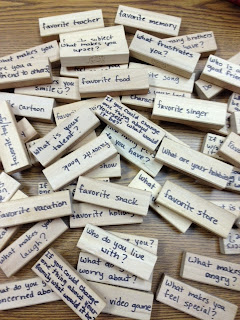If
you have read my office page, then you know that I just moved offices and
positions over the summer. In my office I have a big closet. The bare closet
doors have bothered me since I moved in, but I was not sure what I wanted to
put on them. What is middle school appropriate? I was so afraid of putting
something up that was too babyish...coming from an elementary school and all.
However, after the first two weeks I found myself saying the same things that I
had said the previous four years as an elementary school counselor. Even though
the conversation was more mature, I noticed the students did not have basic
problem solving skills, were confused on what bullying really was, and did not
know the difference between reporting a problem and tattling. They were having
difficulty identifying how they felt and coming up with ways to calm down when
angry or upset. In response to my student's needs, I decided to cover my closet
doors with posters addressing these issues.
The posters that I used were from several of the packets that I have in my TpT store. You can do the same
thing by making your own posters. Just think about the issues that come up most
often with your students. So far I have been amazed at how many students have
looked at and commented on the posters. I have even had students come in angry,
and as I give them time to calm down I can see them studying the posters.
Students have even referenced them in conversation. Teachers, what do you have
on your walls? Make it relevant, because I promise the students read, study,
and look at what is posted.If you want to make your own posters, then make them pleasing to the student's eye. Some hints are:
~Use fun fonts, but make sure they are easy to read
~Use colors that are eye catching, but not so crazy that the message is overpowered
~Use attractive clip art and pictures to support written messages
~Deliver your info clearly and concisely
The posters that I used are from the following packets:
~Counselor's Office Rules - For the Counselor's Office packet
~How to Solve a Problem, Small Problems vs. Big Problems, Reporting vs. Tattling, Bullying or Not - Problem Solving packet
~Anger Rules and Ways to Calm Down - The Anger Hub packet
~Boys & Girls How Are You Feeling Posters - The Emotions Hub packet





